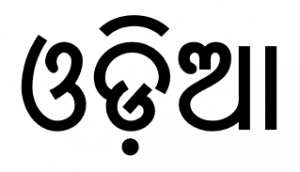Language/Odia/Grammar/Negation
| ◀️ Subject-Verb-Object — Previous Lesson | Next Lesson — Numbers 1-10 ▶️ |
Introduction
Welcome to the lesson on negation in Odia! In this lesson, we will learn how to form negative sentences in Odia using negation words. Negation is an essential aspect of any language, as it allows us to express negation or denial. By mastering negation in Odia, you will be able to communicate effectively and express negative ideas or actions.
Throughout this lesson, we will explore the various negation words used in Odia and their placement in sentences. We will also provide numerous examples to help you understand the concept better. So let's dive right in!
Negation Words
In Odia, there are several words that are used to express negation or denial. These words are placed before the verb in a sentence to indicate that the action or state described by the verb is not happening or does not exist. Let's take a look at some common negation words in Odia:
- ନୁହେଁ (nuhēṁ) - not
- ନ (na) - not
- କିଛି (kichi) - nothing
- କୌଣସି (kaunasi) - no one
- କଣ୍ଠା (kanṭha) - never
These words can be used interchangeably depending on the context of the sentence. Let's see how they are used in negative sentences.
Forming Negative Sentences
To form a negative sentence in Odia, you need to place the negation word before the verb. Here's a simple formula to remember:
Negation Word + Verb
Let's look at some examples:
Example 1
- ମୁଁ ଖାଇଥିଲେନି।
- Muṅi khāithilēni.
- I did not eat.
In this example, the negation word "ନୁହେଁ (nuhēṁ)" is placed before the verb "ଖାଇଥିଲେନି (khāithilēni)" to indicate that the action of eating did not happen.
Example 2
- ସେ ଆସିଲା ନା।
- Sē āsilā nā.
- He did not come.
In this example, the negation word "ନ (na)" is placed before the verb "ଆସିଲା (āsilā)" to indicate that the action of coming did not happen.
Example 3
- ମୋ ପାଇଁ କିଛି ନାହିଁ।
- Mō pāṇi kichi nāhiṁ.
- I have nothing.
In this example, the negation word "କିଛି (kichi)" is placed before the verb "ନାହିଁ (nāhiṁ)" to indicate the absence of any possession.
Example 4
- ତୁମକୁ କଣ୍ଠା ଦେଖିଲା।
- Tumaku kanṭha dēkhilā.
- I never saw you.
In this example, the negation word "କଣ୍ଠା (kanṭha)" is placed before the verb "ଦେଖିଲା (dēkhilā)" to indicate that the action of seeing never happened.
Cultural Insights
Negation in Odia is used in a similar way to other Indian languages. However, it's interesting to note that Odia has its own unique negation words and expressions. These words play a significant role in Odia literature and conversations, adding depth and variety to the language.
Historically, Odia has been influenced by various cultures and languages, including Sanskrit, Persian, and Bengali. These influences have shaped the development of the language and its grammar, including the formation of negative sentences. Understanding the cultural context behind negation in Odia can enhance your overall language learning experience.
Exercises
Now it's time to practice forming negative sentences in Odia! Below are some exercises for you to test your understanding. Try to form negative sentences using the given prompts. Solutions are provided at the end for you to check your answers.
Exercise 1
Prompt: She is not coming. Solution: ସେ ଆସିଲା ନା।
Exercise 2
Prompt: We did not see anything. Solution: ଆମେ କିଛି ଦେଖିନି।
Exercise 3
Prompt: He never eats fish. Solution: ସେ କଣ୍ଠା ମାଛ ଖାଏ।
Exercise 4
Prompt: I have nothing to give. Solution: ମୁଁ ଦେବାଣିରେ କିଛି ନାହିଁ।
Solutions
Here are the solutions to the exercises:
Exercise 1
Solution: ସେ ଆସିଲା ନା।
Exercise 2
Solution: ଆମେ କିଛି ଦେଖିନି।
Exercise 3
Solution: ସେ କଣ୍ଠା ମାଛ ଖାଏ।
Exercise 4
Solution: ମୁଁ ଦେବାଣିରେ କିଛି ନାହିଁ।
You can use these solutions to check your answers and assess your progress.
Videos
Present Perfect Tense in Odia-2 || Negative, Interrogative || Uses of ...
Sources
Other Lessons
- Give your Opinion
- How to Use Be
- How to Use Have
- Pronouns
- Plurals
- Questions
- Conditional Mood
- Adjectives
| ◀️ Subject-Verb-Object — Previous Lesson | Next Lesson — Numbers 1-10 ▶️ |

